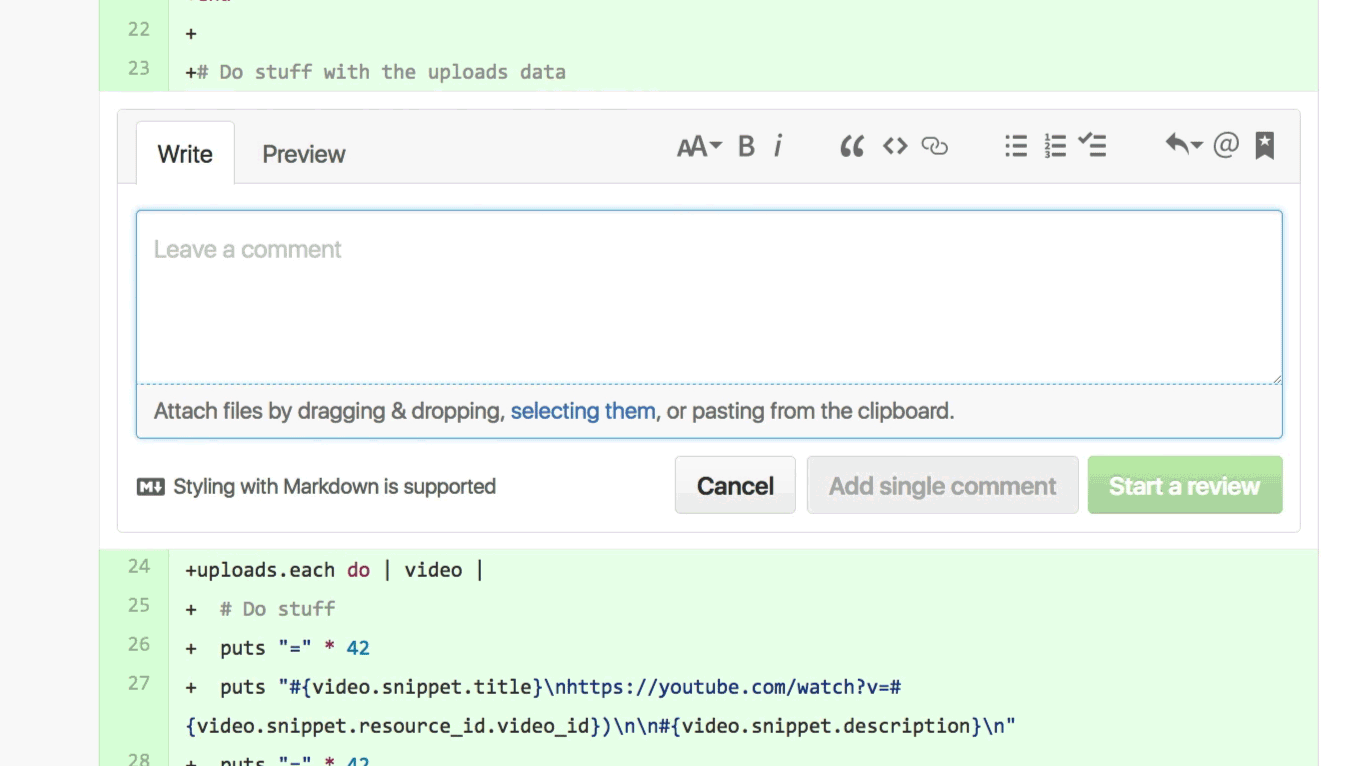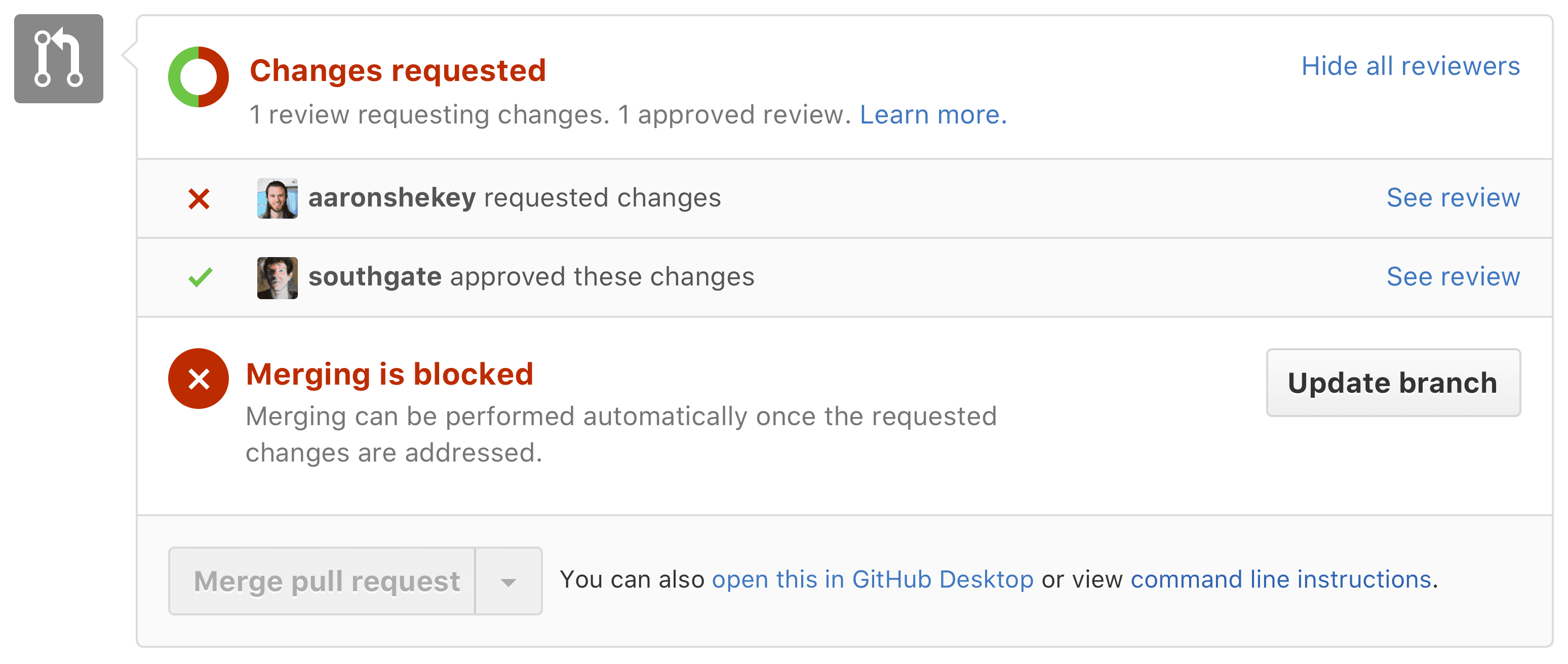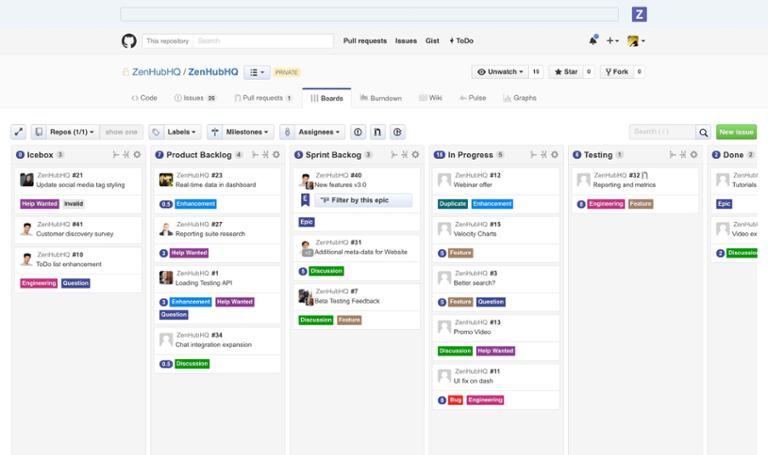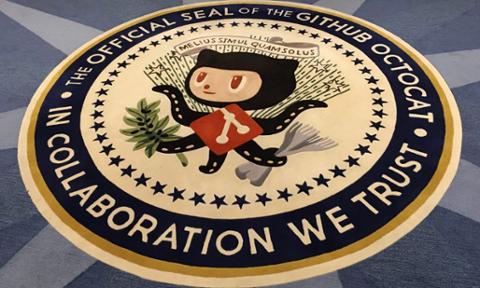
GitHub is
ubiquitous for developers, and rapidly becoming just as widespread amongst tech companies. Today, the company is announcing new features that will make both segments of users happy. The biggest new feature comes to code review, where you can now invite individuals or groups to review pull requests. Reviewers will be able to comment on specific lines of code, request changes or formally approve the pull request. And once a reviewer is finished, the author of the pull request will get a single email; the days of receiving an email every time someone comments on your code is over. This allows multiple reviewers to leave notes, which creates more explicit feedback loops. Administrators can also require code be reviewed and accepted before it’s merged into a branch, which means someone has to look it over and agree that no changes need to be made. If changes are requested, they must be done before the code can be merged.

GitHub is also working on a method to source code reviews from peers, should you have a friend you trust to check your code for you. This is positioned more for developers working on solo projects. The new Projects feature is like a native Trello experience for GitHub (seen at the top of this post). Cards can be created from pull requests, issues or notes, and can be added to customized columns. They can even be dragged between columns to better manage workflow. Administrators can now choose to make two-factor authorization (2FA) mandatory, too. If users don’t have it enabled, admins can choose to lock them out of a repo altogether until they activate it. An email explaining why a user is locked out also tells them how to activate 2FA so they can get back to work. A SAML-based single sign-on (SSO) is coming to GitHub enterprise, and administrators can restrict access for users based on the company's needs. Those restricted users can be limited to a single issue on a repository, or allowed broader access as needed. GitHub hopes it will help companies feel more at ease when hosting code on GitHub. Finally, changes to the GraphQL API will allow third-party integrators better access to data. With a single API call, developers can get data for queries as if they were accessing the service natively. Those queries are optimized based on search, too; GitHub wants its integrators to get what they're looking for quickly without having to manually distill searches. Github tells Dice its former way of working meant the API was a second-class citizen to the native experience, but those days are coming to an end. It knows its native experience may not fit the needs of some users, but doesn’t want them to feel as though they’re not getting the full feature set of GitHub. These improvements to the GraphQL API means GitHub is exposing data as a consumable commodity for integrators, which will keep them on-par with native users. It’s a lot of change for GitHub, but part of its ongoing effort to make sure all users get the most from its service.
 GitHub is ubiquitous for developers, and rapidly becoming just as widespread amongst tech companies. Today, the company is announcing new features that will make both segments of users happy. The biggest new feature comes to code review, where you can now invite individuals or groups to review pull requests. Reviewers will be able to comment on specific lines of code, request changes or formally approve the pull request. And once a reviewer is finished, the author of the pull request will get a single email; the days of receiving an email every time someone comments on your code is over. This allows multiple reviewers to leave notes, which creates more explicit feedback loops. Administrators can also require code be reviewed and accepted before it’s merged into a branch, which means someone has to look it over and agree that no changes need to be made. If changes are requested, they must be done before the code can be merged.
GitHub is ubiquitous for developers, and rapidly becoming just as widespread amongst tech companies. Today, the company is announcing new features that will make both segments of users happy. The biggest new feature comes to code review, where you can now invite individuals or groups to review pull requests. Reviewers will be able to comment on specific lines of code, request changes or formally approve the pull request. And once a reviewer is finished, the author of the pull request will get a single email; the days of receiving an email every time someone comments on your code is over. This allows multiple reviewers to leave notes, which creates more explicit feedback loops. Administrators can also require code be reviewed and accepted before it’s merged into a branch, which means someone has to look it over and agree that no changes need to be made. If changes are requested, they must be done before the code can be merged.  GitHub is also working on a method to source code reviews from peers, should you have a friend you trust to check your code for you. This is positioned more for developers working on solo projects. The new Projects feature is like a native Trello experience for GitHub (seen at the top of this post). Cards can be created from pull requests, issues or notes, and can be added to customized columns. They can even be dragged between columns to better manage workflow. Administrators can now choose to make two-factor authorization (2FA) mandatory, too. If users don’t have it enabled, admins can choose to lock them out of a repo altogether until they activate it. An email explaining why a user is locked out also tells them how to activate 2FA so they can get back to work. A SAML-based single sign-on (SSO) is coming to GitHub enterprise, and administrators can restrict access for users based on the company's needs. Those restricted users can be limited to a single issue on a repository, or allowed broader access as needed. GitHub hopes it will help companies feel more at ease when hosting code on GitHub. Finally, changes to the GraphQL API will allow third-party integrators better access to data. With a single API call, developers can get data for queries as if they were accessing the service natively. Those queries are optimized based on search, too; GitHub wants its integrators to get what they're looking for quickly without having to manually distill searches. Github tells Dice its former way of working meant the API was a second-class citizen to the native experience, but those days are coming to an end. It knows its native experience may not fit the needs of some users, but doesn’t want them to feel as though they’re not getting the full feature set of GitHub. These improvements to the GraphQL API means GitHub is exposing data as a consumable commodity for integrators, which will keep them on-par with native users. It’s a lot of change for GitHub, but part of its ongoing effort to make sure all users get the most from its service.
GitHub is also working on a method to source code reviews from peers, should you have a friend you trust to check your code for you. This is positioned more for developers working on solo projects. The new Projects feature is like a native Trello experience for GitHub (seen at the top of this post). Cards can be created from pull requests, issues or notes, and can be added to customized columns. They can even be dragged between columns to better manage workflow. Administrators can now choose to make two-factor authorization (2FA) mandatory, too. If users don’t have it enabled, admins can choose to lock them out of a repo altogether until they activate it. An email explaining why a user is locked out also tells them how to activate 2FA so they can get back to work. A SAML-based single sign-on (SSO) is coming to GitHub enterprise, and administrators can restrict access for users based on the company's needs. Those restricted users can be limited to a single issue on a repository, or allowed broader access as needed. GitHub hopes it will help companies feel more at ease when hosting code on GitHub. Finally, changes to the GraphQL API will allow third-party integrators better access to data. With a single API call, developers can get data for queries as if they were accessing the service natively. Those queries are optimized based on search, too; GitHub wants its integrators to get what they're looking for quickly without having to manually distill searches. Github tells Dice its former way of working meant the API was a second-class citizen to the native experience, but those days are coming to an end. It knows its native experience may not fit the needs of some users, but doesn’t want them to feel as though they’re not getting the full feature set of GitHub. These improvements to the GraphQL API means GitHub is exposing data as a consumable commodity for integrators, which will keep them on-par with native users. It’s a lot of change for GitHub, but part of its ongoing effort to make sure all users get the most from its service. 


